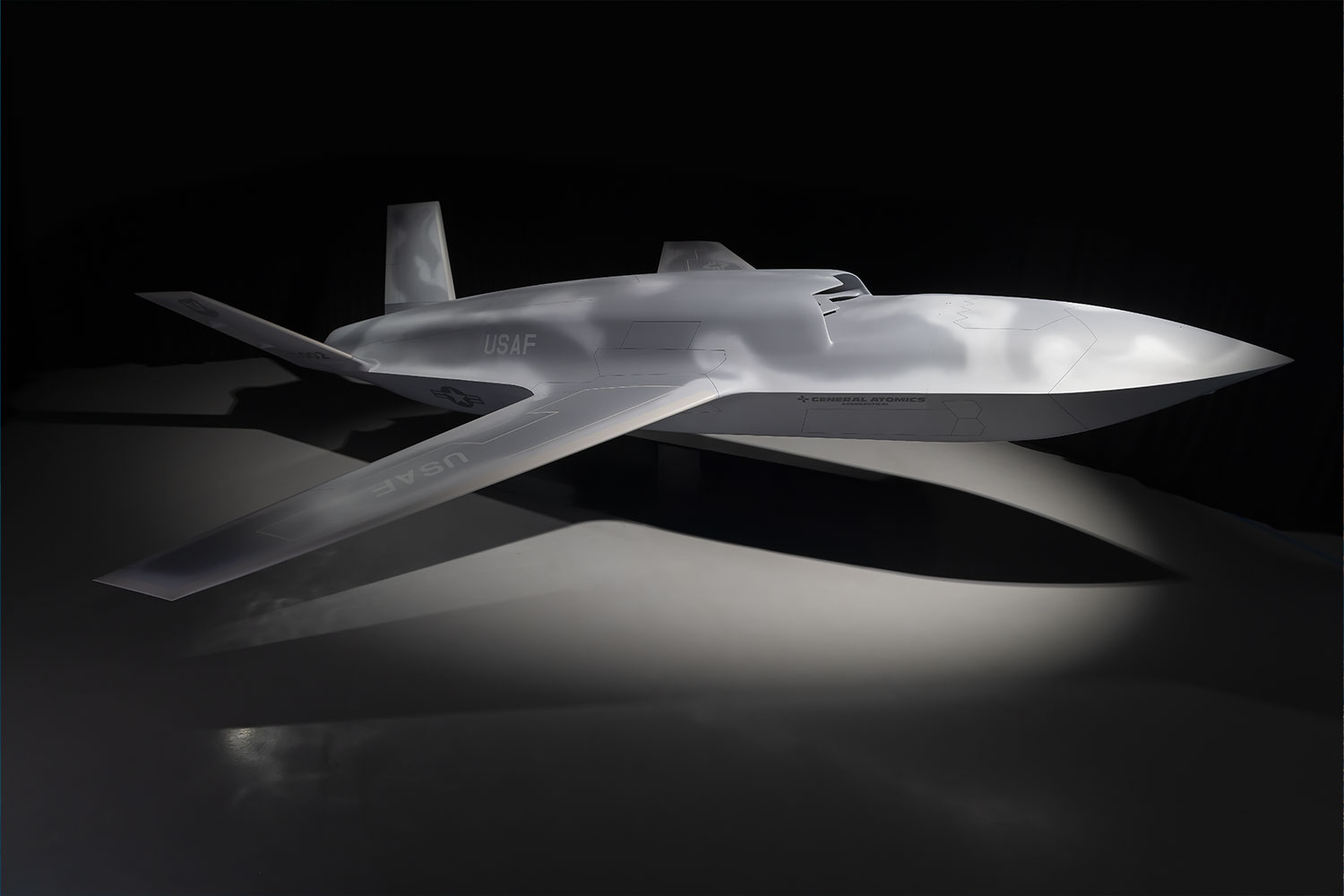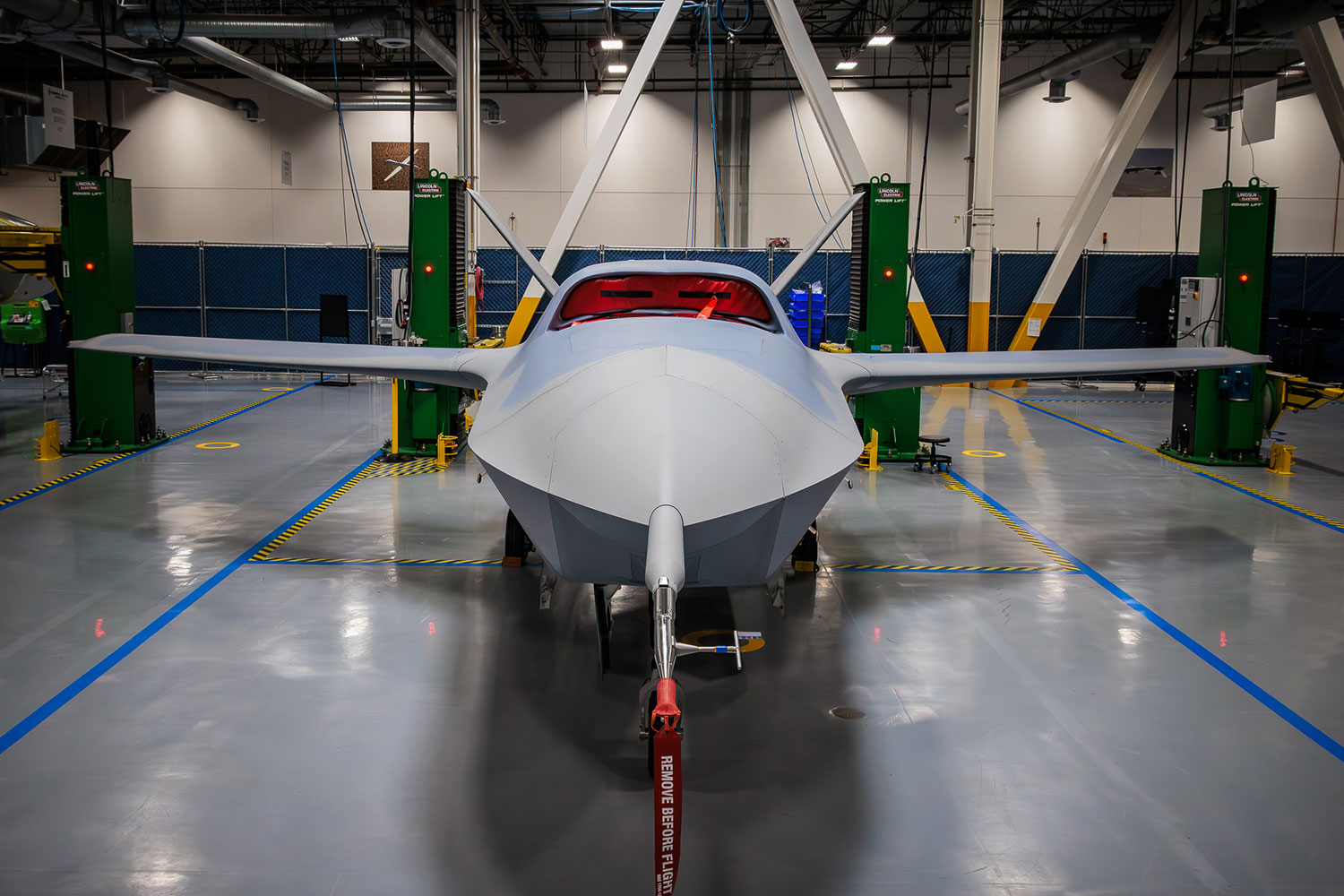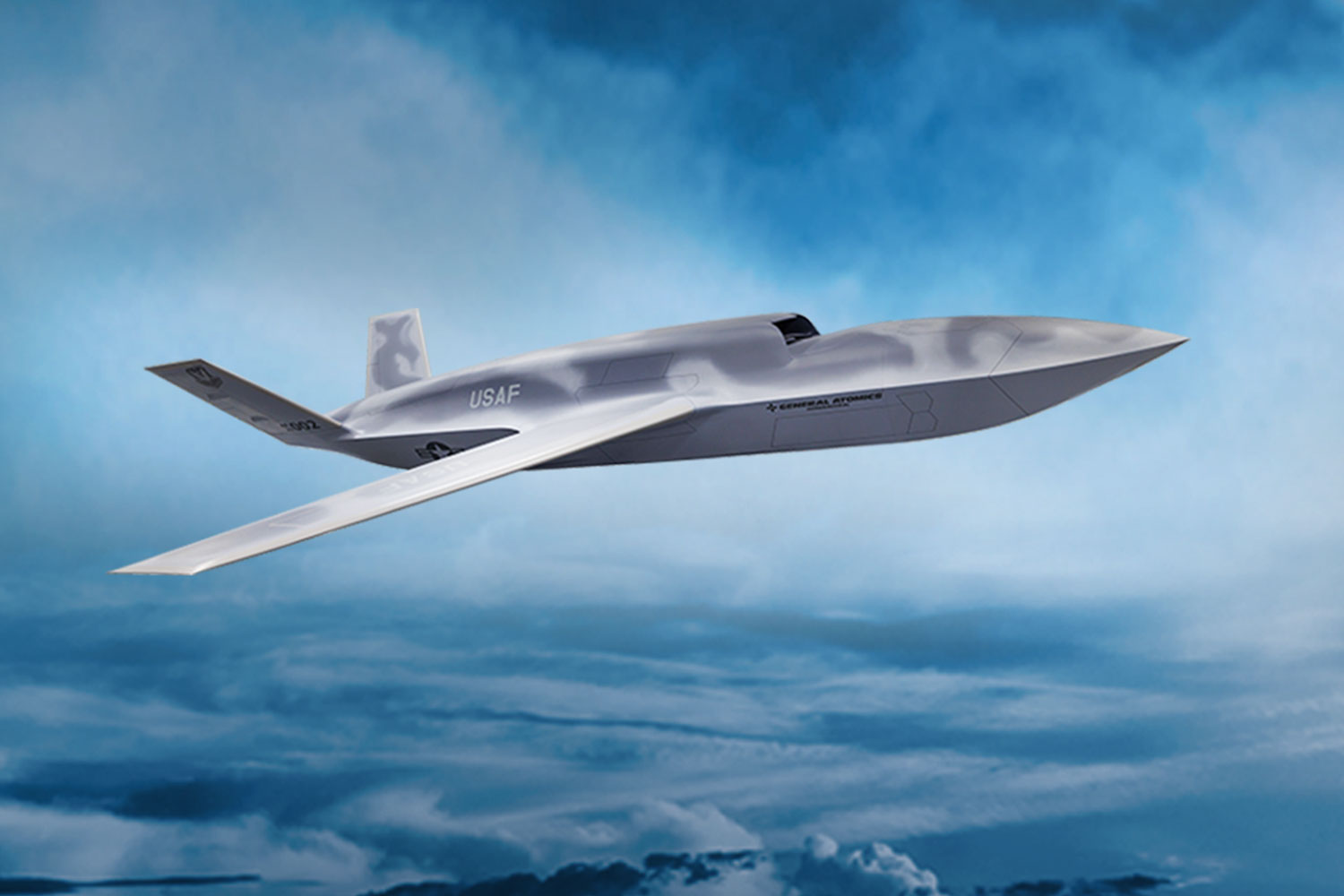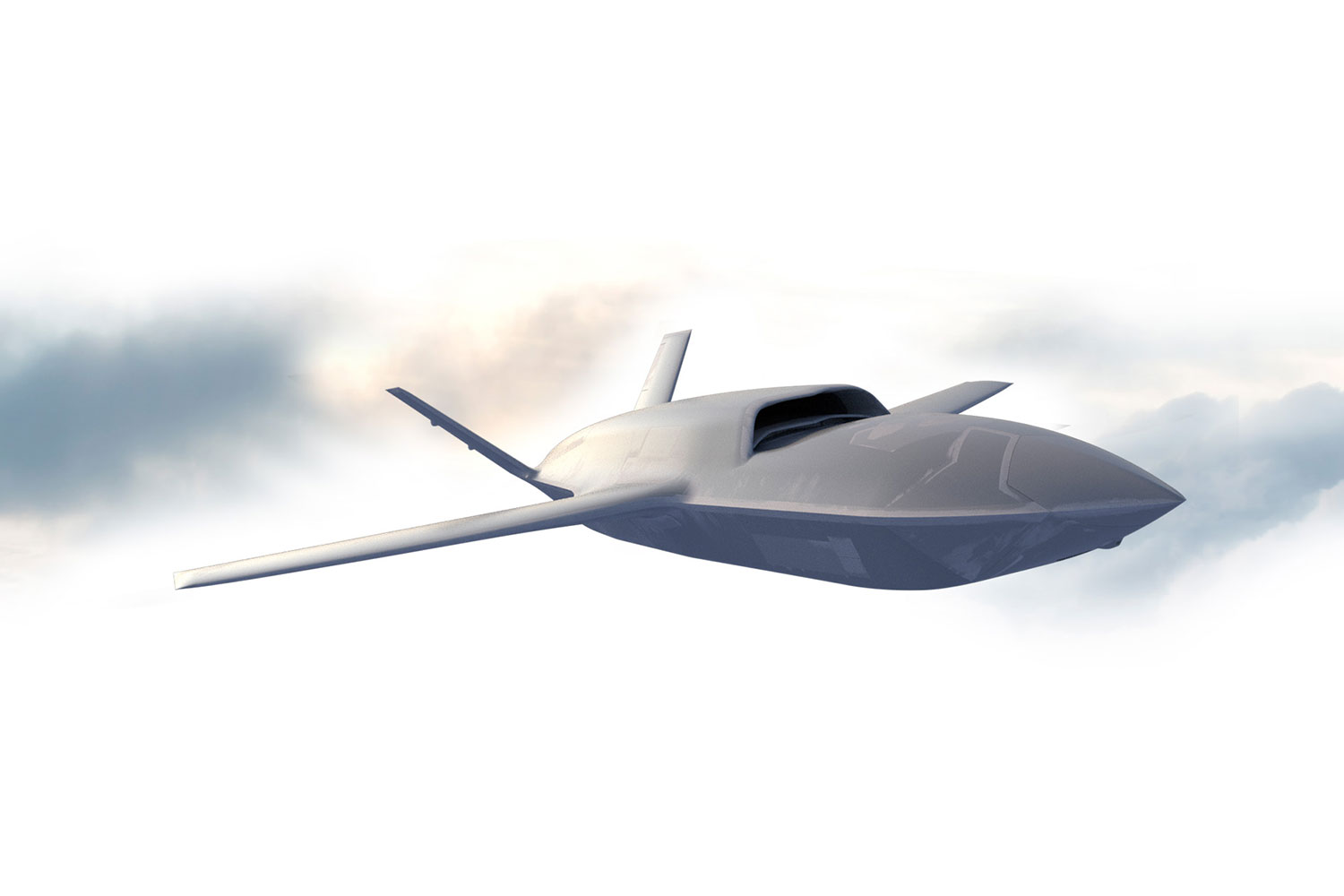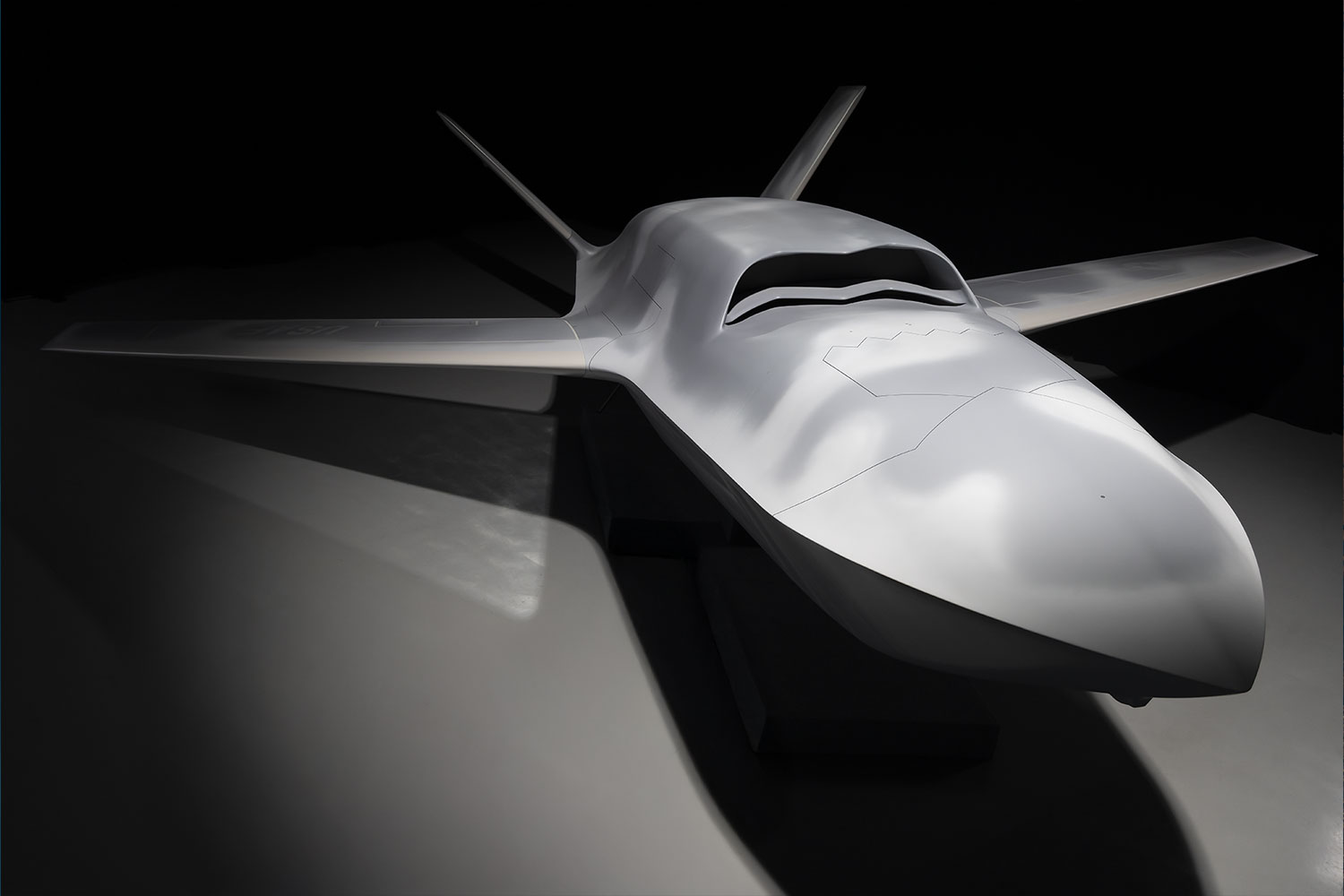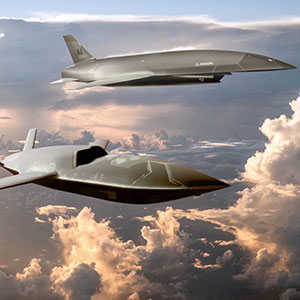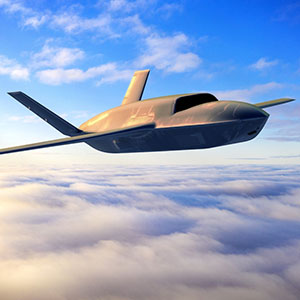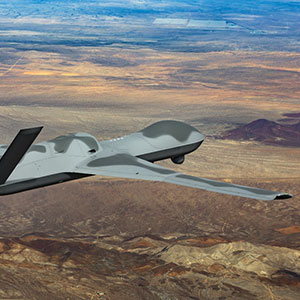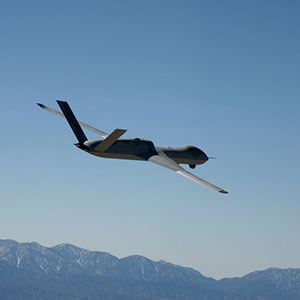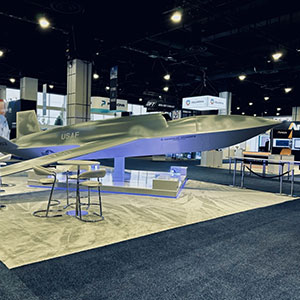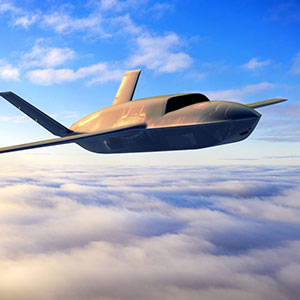The Future of Airpower: Capability. Capacity. Agility.
The U.S. Air Force’s ability to achieve and maintain air superiority is increasingly challenged with the exponential rise of advanced technologies and adversarial capabilities. To keep ahead, the U.S. Air Force is pursuing air combat aviation efforts in crewed-uncrewed teaming and integration to expand the fighter fleet and protect human pilots at a lower cost than crewed fighters. Collaborative Combat Aircraft (CCA) are semi-autonomous, jet-powered uncrewed systems that will operate alongside crewed fighter jets, capable of flying independently or in small groups.
Designated YFQ-42A by the U.S. Air Force, General Atomics Aeronautical Systems, Inc.’s (GA-ASI) collaborative combat aircraft is a critical piece in securing air dominance and homeland defense. YFQ-42A will fly alongside human-piloted fighters, enhancing their sensing, networking, and combat capabilities through advanced autonomy and crewed-uncrewed teaming to detect, defeat and defend against adversary threats.
CCA will seamlessly integrate with current and next-generation crewed aircraft, expanding mission capabilities for joint and combined forces. Taking direction from human pilots, YFQ-42A will enable warfighters to defeat enemy threats in contested environments and perform a broad a range of missions such as air combat, electronic warfare, targeting, intelligence, surveillance & reconnaissance (ISR).
YFQ-42A collaborative combat aircraft provides the fighter capacity—combat mass—at an affordable cost and on a threat-relevant timeline.
